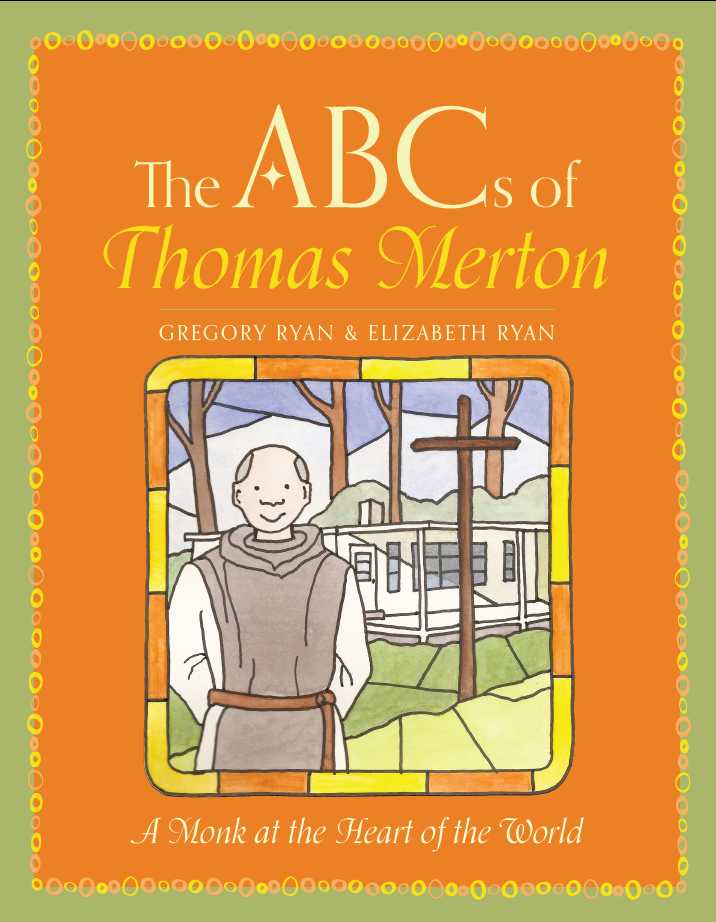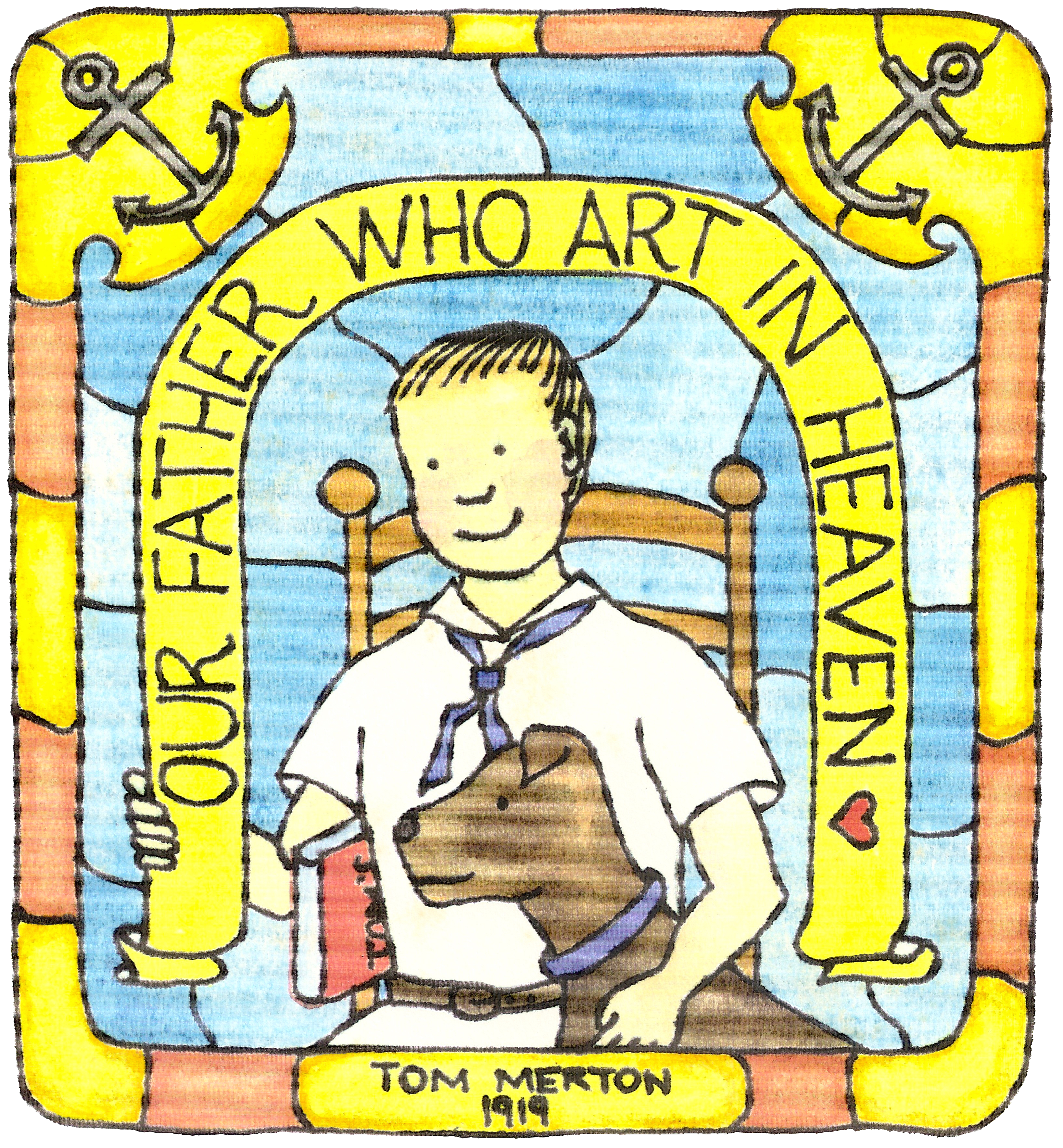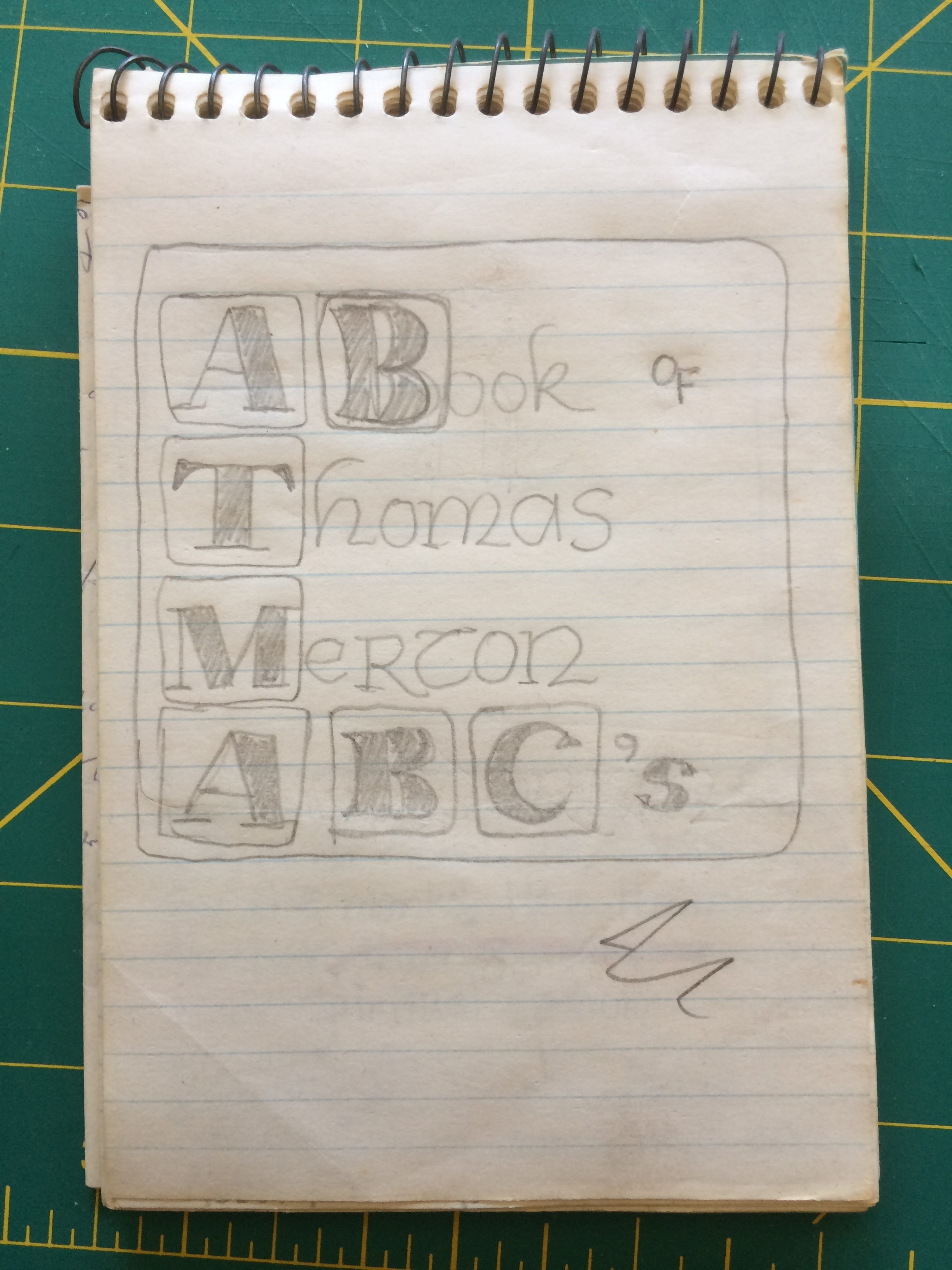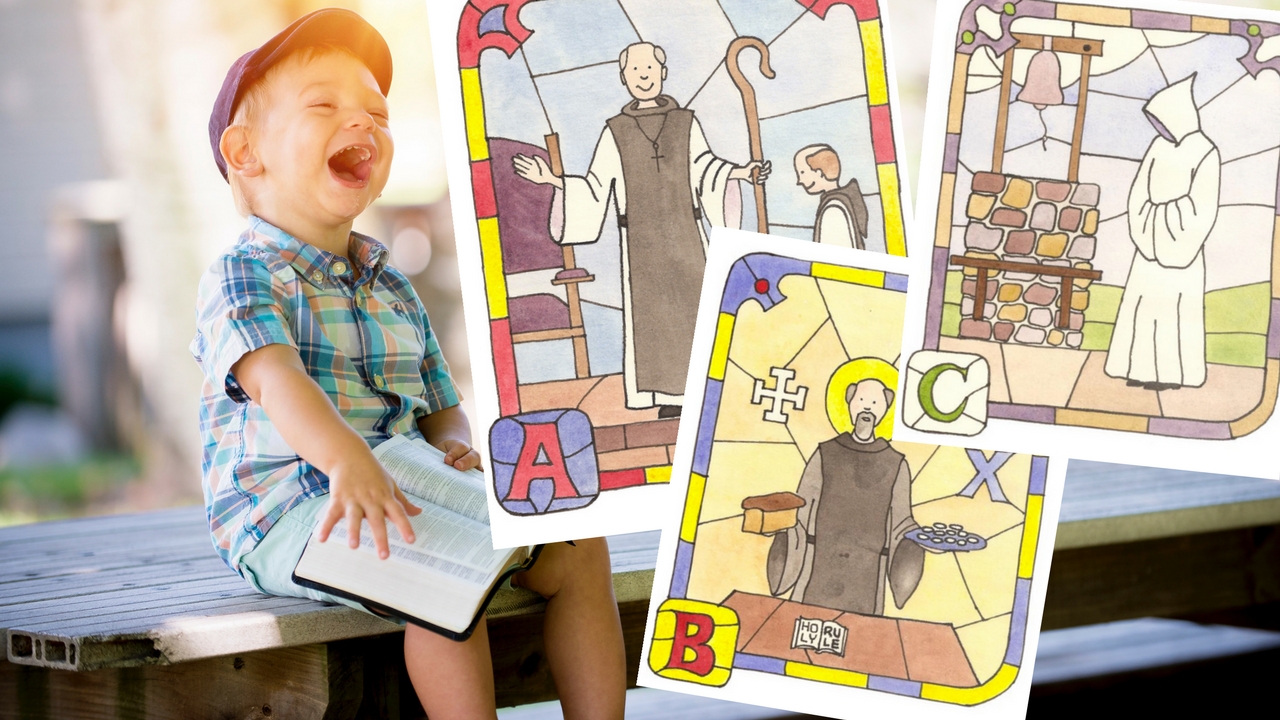“The ABC’s of Thomas Merton, A Monk at the Heart of the World” by Gregory & Elizabeth Ryan
“It’s as easy as A, B, C!”
 Challenge: How to take the information found on our shelves and shelves—and shelves!—of books by and about Thomas Merton, and make it all understandable to a young audience.
Challenge: How to take the information found on our shelves and shelves—and shelves!—of books by and about Thomas Merton, and make it all understandable to a young audience.
As a youngster, I had heard about a “mysterious” Trappist monk who lived an austere life of silence, prayer and work in a monastery far removed from the rest of the world. As an adult, I first came upon Merton in a serious way in 1971 when I was working as a nursing assistant at The New Jersey Neuropsychiatric Institute, near Princeton. I was serving as a civilian conscientious objector during the war in Vietnam. During the initial four-weeks of training, I befriended a fellow who was also a CO. I soon learned that he was a radical philosopher, through and through. He was also a professed atheist. He knew I was a Catholic, but that did not get in the way of our having many lively discussions during our lunch-breaks. His small room on the hospital grounds was crammed full of books. More, he admitted, than he could ever read. But one day, he handed me two books that changed my life: The Man in the Sycamore Tree, Edward Rice’s “entertainment-biography” of his friend Thomas Merton, and The Sign of Jonas, one of Merton’s most celebrated monastic journals. More than 40 years later, much like Richard’s small room, our house is crammed full of Merton books. Unlike Richard’s, however, they’ve all been read. And re-read. And re-read.
Once having been “bitten” by the Merton bug, I looked for magazine and journal articles about Merton. I wrote to many of those authors who were in what I would call the “first generation” of Merton scholars, who very generously answered my questions, or sent me photocopies of their work. Most importantly, I befriended Dr. Robert E. Daggy, Director of the Thomas Merton Studies Center at Bellarmine College (now University), who very soon became “Bob.” Merton enthusiasts of my age (late-60’s) know how generous Bob was both with his knowledge and with his friendship. The first thing I published on Merton was in the 1970’s and was a result of Bob’s invitation to contribute something to “The Merton Seasonal” which he edited. The very short piece compared Thomas Merton with Dom John Main OSB, my meditation teacher. (Learn more at www.WCCM.org). Over the years, I’ve published other Merton-related articles in The Seasonal and other journals.

One day, in the 1980’s, while I was sitting in the car waiting for our older daughter, who was having her piano lesson, it occurred to me that Merton had published not only The Asian Journal but Zen and the Birds of Appetite. Titles from A to Z. Hmmmm…. Click! I was off to the races.
Being a second grade teacher for many years, I had a small pad with me. I started to make a few notes and some rough sketches for what was important in the life of Thomas Merton, starting with “A is for Abbot, B is for Benedict….” and so on. When we got home, I shared the sketches and the texts with my wife, Liz, who is a very talented artist. She thought it was a great idea. And so did Caitlin, our young pianist. Our other daughter, Abbey, who today is also an artist, was a tad too young at the time. She was in her room, busily making her own pictures.

Liz and I soon had a fully illustrated manuscript ready and sent it out to publishers. This was in the days of postal mail. You could only submit your work to one publisher at a time. Weeks would go by between submissions. After a good number of thoughtful rejections and one very hard nibble—which unfortunately got away—we put the project on the shelf, where it sat for many years. We took it down for time to time to show friends and family. They all repeated a familiar refrain, “This is good. You should try again!”
In the summer of 2015, Abbey and her partner were visiting for a weekend. In the middle of a long walk down Memory Lane, the subject of the book came up again. Liz went to her studio and took the manuscript down from the shelf and we listened to Abbey and Leigh as they flipped through the manuscript. They liked it! “This is good. You should try again!” Click! (By the way, Caitlin and Abbey both have “Merton” for their middle names.)
I spent the next few weeks scanning the text and the color illustrations. Skills I did not have the first time around. Nobody did; there were no personal computers. The text needed some additional tweaking, but the paintings were still perfect, thanks to Liz’s artistry. We settled on a lay-out and “saved” the now-digitized book as a PDF file.
As luck would have it, one day I came across an ad in the National Catholic Reporter for the re-issue of Anthony Padovano’s excellent book on Merton. I sent an email inquiry to the publisher about our ABCs of Thomas Merton, A Monk at the Heart of the World. In just a few moments, my inbox had the reply: “Let’s see it.” After some nail-biting while PDF files were Drop-boxed back and forth, the verdict came back. “We love it!” The only problem was, they had not yet published any children’s books. But they might start. They didn’t. (Insert big “sad-face” here.)
Fortunately, that editor did not give up on us. He was just embarking on a new position at this publisher, after recently coming from a position at Paraclete Press. But he believed in the book and he said he would send it on to Paraclete. He was sure they would like it. And they did! I’m sure it didn’t hurt, either, that we had included with our submission what some might call “glowing endorsements” from more than half a dozen of today’s leaders in Merton studies, contemplative prayer, and pastoral care who had previewed a PDF file of the illustrated manuscript.
Staffed by a creative and talented monastic community, Paraclete Press has been a perfect fit for our book. We could not be happier.
When I tell this story to people, I always tell them not to give up. If they have a good idea, keep at it—no matter what others might think.
As I look back on this publishing journey, I can see how, as some may say, the stars had to be aligned just so to make it happen. Me, I would say it all happened in God’s own good time.
Note: You can take a behind-the-scenes look at the making of the book here and view Paraclete Press’s wonderful video here!
– Gregory and Elizabeth Ryan


